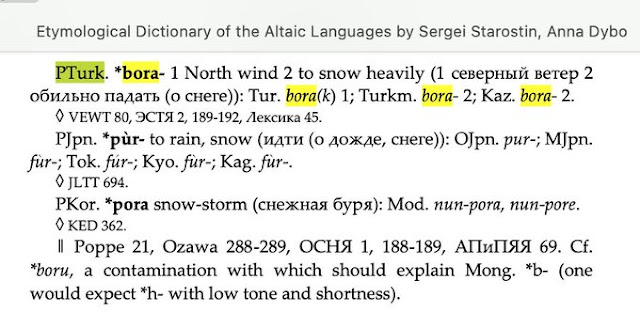*
In Titus Livius (Livy), The History of Rome, Book 45
we read:
The second canton would be bounded on the east by the Strymon, exclusive of Sintice, Heraclea and Bisaltica; and on the west by the Axius, including the Paeonians, who dwelt to the east of the Axius. The third division would be the district enclosed between the Axius on the east and the Peneus on the west; the Bora range shuts it in on the north. [8] This canton was increased by the addition of the part of Paeonia which extends westwards beyond the Axius; Edessa and Beroea were assigned to this division. The fourth canton lay on the other side of the Bora range, bordering Illyria on the one side and Epirus on the other.
*
BORA
While Titus Livius divided the Macedonian Province into regions for the Roman Empire 2000 years ago, he counts the Bora Mountain Range in the NORTH/1
 |
| Link: Bora Mountain Range |
Bora means NORTH wind AND heavy snowfall in Proto-Turkish/2
Ottoman Turks named these mountains Kaymakçalan because of their snowy hills/3
 |
| English Wikipedia |
*
This is how we can follow the Proto-Turkic word "Bora" in the Ancient Thrace Region.
*
TURKISH VERSION
BORA
Titus Livius 2000 yıl önce Makedon İli'ni Roma İmp. için bölgelere ayırırken, KUZEY'de Bora Sıradağlarını sayar/1
*görsel yukarıda*
Bora Ön-Türkçe 'de KUZEY Rüzgarı VE aşırı kar yağışı anlamındadır/2
*görsel yukarıda*
Bu dağlara Osmanlı Türkü, karlı tepeleri yüzünden Kaymakçalan adını vermiştir/3
*görsel yukarıda*
*
Ön-Türkçe "Bora" sözcügünü, Antik Trakya Bölgesi'nde böyle takip edebiliyoruz.
*
Uzunbacak Adem
*
Other blogs about this word:
Birkac yararlı blog:






No comments:
Post a Comment
Note: Only a member of this blog may post a comment.